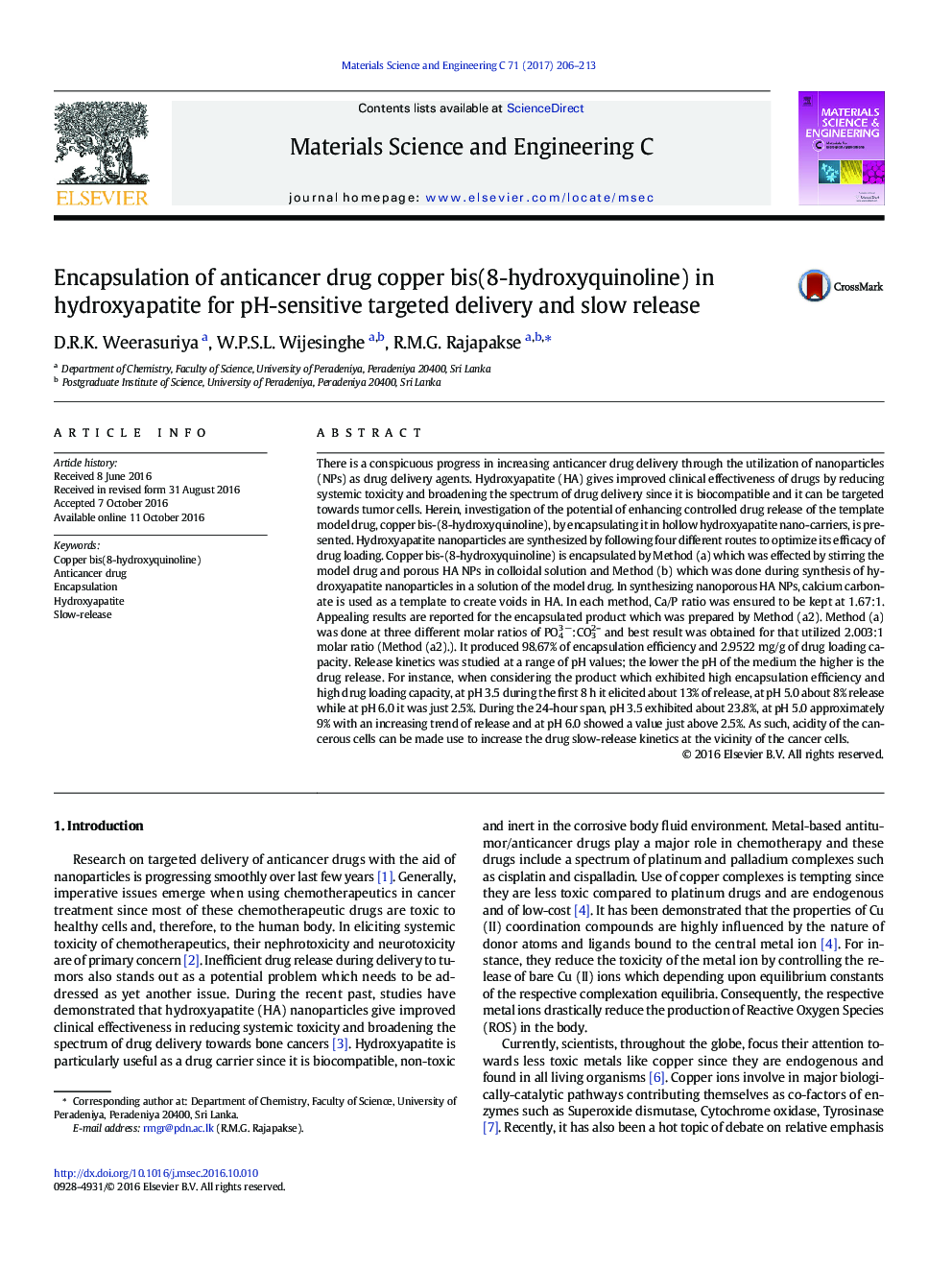| کد مقاله | کد نشریه | سال انتشار | مقاله انگلیسی | نسخه تمام متن |
|---|---|---|---|---|
| 5434624 | 1509150 | 2017 | 8 صفحه PDF | دانلود رایگان |

- Porous Hydroxyapatite is prepared under calcium sucrate route.
- Template drug copper bis-(8-hydroxyquinoline) is encapsulated to hydroxyapatite nanocarriers.
- Encapsulated drug is released at acidic pH environments.
- Drug released rate is depended at different ph values.
There is a conspicuous progress in increasing anticancer drug delivery through the utilization of nanoparticles (NPs) as drug delivery agents. Hydroxyapatite (HA) gives improved clinical effectiveness of drugs by reducing systemic toxicity and broadening the spectrum of drug delivery since it is biocompatible and it can be targeted towards tumor cells. Herein, investigation of the potential of enhancing controlled drug release of the template model drug, copper bis-(8-hydroxyquinoline), by encapsulating it in hollow hydroxyapatite nano-carriers, is presented. Hydroxyapatite nanoparticles are synthesized by following four different routes to optimize its efficacy of drug loading. Copper bis-(8-hydroxyquinoline) is encapsulated by Method (a) which was effected by stirring the model drug and porous HA NPs in colloidal solution and Method (b) which was done during synthesis of hydroxyapatite nanoparticles in a solution of the model drug. In synthesizing nanoporous HA NPs, calcium carbonate is used as a template to create voids in HA. In each method, Ca/P ratio was ensured to be kept at 1.67:1. Appealing results are reported for the encapsulated product which was prepared by Method (a2). Method (a) was done at three different molar ratios of PO43Â â:CO32- and best result was obtained for that utilized 2.003:1 molar ratio (Method (a2).). It produced 98.67% of encapsulation efficiency and 2.9522Â mg/g of drug loading capacity. Release kinetics was studied at a range of pH values; the lower the pH of the medium the higher is the drug release. For instance, when considering the product which exhibited high encapsulation efficiency and high drug loading capacity, at pHÂ 3.5 during the first 8Â h it elicited about 13% of release, at pHÂ 5.0 about 8% release while at pHÂ 6.0 it was just 2.5%. During the 24-hour span, pHÂ 3.5 exhibited about 23.8%, at pHÂ 5.0 approximately 9% with an increasing trend of release and at pHÂ 6.0 showed a value just above 2.5%. As such, acidity of the cancerous cells can be made use to increase the drug slow-release kinetics at the vicinity of the cancer cells.
117
Journal: Materials Science and Engineering: C - Volume 71, 1 February 2017, Pages 206-213